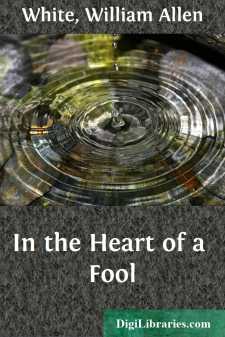Categories
- Antiques & Collectibles 13
- Architecture 36
- Art 48
- Bibles 22
- Biography & Autobiography 813
- Body, Mind & Spirit 142
- Business & Economics 28
- Children's Books 17
- Children's Fiction 14
- Computers 4
- Cooking 94
- Crafts & Hobbies 4
- Drama 346
- Education 46
- Family & Relationships 57
- Fiction 11829
- Games 19
- Gardening 17
- Health & Fitness 34
- History 1377
- House & Home 1
- Humor 147
- Juvenile Fiction 1873
- Juvenile Nonfiction 202
- Language Arts & Disciplines 88
- Law 16
- Literary Collections 686
- Literary Criticism 179
- Mathematics 13
- Medical 41
- Music 40
- Nature 179
- Non-Classifiable 1768
- Performing Arts 7
- Periodicals 1453
- Philosophy 64
- Photography 2
- Poetry 896
- Political Science 203
- Psychology 42
- Reference 154
- Religion 513
- Science 126
- Self-Help 84
- Social Science 81
- Sports & Recreation 34
- Study Aids 3
- Technology & Engineering 59
- Transportation 23
- Travel 463
- True Crime 29
Our website is made possible by displaying online advertisements to our visitors.
Please consider supporting us by disabling your ad blocker.
In the Heart of a Fool
Description:
Excerpt
CHAPTER I
BEING STAGE DIRECTIONS, AND A CAST OF CHARACTERS
Sunshine and prairie grass–well in the foreground. For the background, perhaps a thousand miles away or more than half a decade removed in time, is the American Civil War. In the blue sky a meadow lark’s love song, and in the grass the boom of the prairie chicken’s wings are the only sounds that break the primeval silence, excepting the lisping of the wind which dimples the broad acres of tall grass–thousand upon thousand of acres–that stretch northward for miles. To the left the prairie grass rises upon a low hill, belted with limestone and finally merges into the mirage on the knife edge of the far horizon. To the southward on the canvas the prairie grass is broken by the heavy green foliage above a sluggish stream that writhes and twists and turns through the prairie, which rises above the stream and meets another limestone belt upon which the waving ripples of the unmowed grass wash southward to the eye’s reach.
Enter R. U. E. a four-ox team hauling a cart laden with a printing press and a printer’s outfit; following that are other ox teams hauling carts laden with tents and bedding, household goods, lumber, and provisions. A four-horse team hauling merchandise, and a span of mules hitched to a spring wagon come crashing up through the timber by the stream. Men and women are walking beside the oxen or the teams and are riding in the covered wagons. They are eagerly seeking something. It is the equality of opportunity that is supposed to be found in the virgin prairies of the new West. The men are nearly all veterans of the late war, for the most part bearded youngsters in their twenties or early thirties. The women are their fresh young wives. As the procession halts before the canvas, the men and women begin to unpack the wagons and to line out on each side of an imaginary street in the prairie. The characters are discovered as follows:
Amos Adams, a red-bearded youth of twenty-nine and Mary Sands, his wife. They are printers and begin unpacking and setting up the printing material in a tent.
Dr. James Nesbit and Bedelia Satterthwaite, his wife, in the tent beside the Adamses.
Captain Ezra Morton, and Ruth his wife; he is selling a patent, self-opening gate.
Ahab Wright, in side whiskers, white necktie, flannel shirt and carefully considered trousers tucked in shiny boots.
Daniel Sands, Jane, his young wife, and Mortimer, her infant stepson. Daniel owns the merchandise in the wagon.
Casper Herdicker, cobbler, and Brunhilde Herdicker, his wife.
Herman Müller, bearded, coarse-featured, noisy; a Pennsylvania Dutchman, his faded, rope-haired, milk-eyed, sickly wife and Margaret, their baby daughter.
Kyle Perry, owner of the horses and spring wagon.
Dick Bowman, Ira Dooley, Thomas Williams, James McPherson, Dennis Hogan, a boy, laborers.
As other characters enter during the early pages of the story they shall be properly introduced.
As the actors unload their wagons the spectators may notice above their heads bright, beautiful and evanescent forms coming and going in and out of being. These are the visions of the pioneers, and they are vastly more real than the men and women themselves. For these visions are the forces that form the human crystal.
Here abideth these three: sunshine and prairie grass and blue sky, cloud laden. These for ages have held domain and left the scene unchanged. When lo–at Upper Middle Entrance,–enter love! And love witched the dreams and visions of those who toiled in the sunshine and prairie grass under the blue sky cloud laden. And behold what they visioned in the witchery of love, took form and spread upon the prairie in wood and stone and iron, and became a part of the life of the Nation. Blind men in other lands, in other times looked at the Nation and saw only wood and stone and iron. Yet the wood and stone and iron should not have symbolized the era in America. Rather should the dreams and visions of the pioneers, of those who toiled under the sunshine and in the prairie grass have symbolized our strength. For half a century later when the world was agonizing in a death grapple with the mad gods of a crass materialism, mankind saw rising from the wood and stone and iron that had seemed to epitomize this Nation, a spirit which had lain hidden yet dormant in the Nation’s life–a beautiful spirit of idealism strong, brave and humbly wise; the child of the dreams and visions and the love of humanity that dwelled in the hearts of the pioneers of that earlier time.
But this is looking forward. So let us go back to scene one, act one, in those days before the sunshine was shaded, the prairie grass worn off, and the blue sky itself was so stained and changed that the meadow-lark was mute...!



